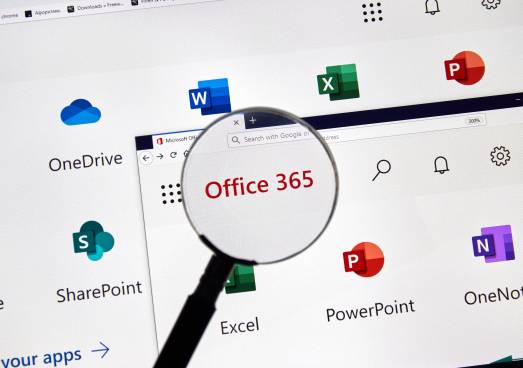Microsoft PowerApps is arguably the leading platform in the low-code application development space. Recent studies show that over 86% of the Fortune 500 are now using the platform, as well as thousands of businesses of every size, sector, and geography.
Using PowerApps for Office 365, businesses can quickly build custom applications that automate their repetitive, time-consuming, and often humongous day-to-day tasks.
What Is PowerApps for Office 365?
PowerApps for Office 365 is a tool that allows you to create custom applications for your business with little or no coding skills required. It’s one of the features included in the Microsoft 365 suite.
Microsoft PowerApps offers a suite of templates and connectors to various data sources, making it considerably faster and easier to build an app that meets your specific needs. Apps developed using this platform are accessible via mobile devices or browsers.
How to Use Microsoft PowerApps for Your Business?
Wondering which kind of applications you can build using Microsoft PowerApps? Or how best this powerful, modern-day tool can help to streamline workflows?
Below, we explore the top five actionable use cases for beginners, highlighting how organizations can leverage the potential of Microsoft PowerApps.
Employee Onboarding
A company’s onboarding process can make or break a new employee’s onboarding experience. New employees not only need to feel welcome and comfortable in their new role but also stay up to date on the organization’s policies and procedures.
PowerApp’s ability to interact with data stored in other Office 365 applications makes it an ideal choice for creating an employee onboarding app. Using PowerApps, thousands of organizations have created apps that tap into the data from Outlook, calendars, tasks, and more.
These apps offer plenty of resources for new employees, including team member contacts, policy guides, and forms they can use to fill out their internal profiles.
On-Site Attendance Management
Companies that lack proper time and attendance policies tend to face challenges such as scheduling conflicts, customer delays, and poor service delivery.
PowerApps can address these challenges by doing away with the manual nature of processes and workflows. By creating a custom on-site attendance management app, companies can automate the entire on-site attendance process.
As PowerApps can seamlessly integrate with SharePoint lists, it’s easy to pull and update the data with punch or check-in time. Where necessary, companies can also integrate the app with Power BI to create powerful attendance reports with various custom filters.
Expense Approvals
Manual expense approvals are a cumbersome and time-consuming exercise. From combing through paper receipts to recording each transaction from the previous month to confirming if they’re up to date, there’s a lot going into manual expense approval processes.
In Microsoft PowerApps, it’s quick and easy to create a competent expense approval app, which allows employees or vendors to claim expense requests and attach valid proofs.
When a new request is made, a notification is sent to the management to review, approve or reject the request, and add comments to validate their action.
Real-time notification is also sent to the requester informing them of any action taken by the management.
Sales Intake Forms
Field service employees visiting client locations are often detached from the main office. Moreover, most of these personnel are heavily reliant on paper documentation when completing a sales order or filling out client information.
Luckily, PowerApps can help create a mobile-friendly app that coordinates field employees tasked with completing sales orders outside the office. The PowerApps integration with Dynamics allows users to extract and enter data into the Dynamics 365 CRM with easy-to-use forms.
Field service employees across various departments can install the app on their mobile devices and input client information into fixed fields. This information is then saved on the preferred system for analysis and report generation.
This way, the management can have a holistic view of sales figures from remote locations on custom dashboards.
Image Processing Functionalities
PowerApps for Office 365 has the ability to seamlessly integrate with camera-enabled devices. This means that the apps built using this platform can offer image processing functionalities.
Healthcare providers, construction companies, as well as manufacturers, and retailers can take pictures of items with a mobile device’s camera. The device’s GPS collects the data from the images and relays it to the customized inspection app for quality checks during inspections.
The app can also store some of the information within the common data service layer and simulate a hosted database.
The PowerApps platform can also be of great use to developers looking to create facial recognition apps for their users. Such apps capture photos of individuals, transmit the images to a back-end facial recognition service, and relay information about the user.
Build Your Next App in PowerApps
PowerApps for Office 365 has a lot to offer. Leveraging this platform is a great way to automate your business processes, improve communication and collaboration, as well as enhance company-wide efficiency and productivity.
These five use cases are just a basic representation of what PowerApps can do to transform your business into the new age of technology. Now is the time to build your next app in PowerApps and digitally transform your business processes.






![YouTube SEO in 2024 [Definitive Guide]](https://getpixie.com/wp-content/uploads/2024/02/shutterstock_1684828252-1-150x150.jpg)








